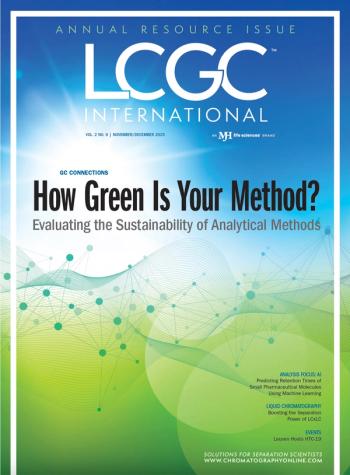
LCGC Asia Pacific eNews
- LCGC Asia Pacific eNews-09-26-2013
- Volume 0
- Issue 0
US Senate Avert Impending Helium Crisis
The US senate has passed a bill halting the impending shut down on October 7th of the Federal program for crude helium sale, storage, and delivery. The program at present supplies 40% of helium demand in the USA and 30% of worldwide demand.
The US senate has passed a bill halting the impending shut down on October 7th of the Federal program for crude helium sale, storage, and delivery. The program at present supplies 40% of helium demand in the USA and 30% of worldwide demand.
The Department of the Interior’s Bureau of Land Management (BLM) had indicated that the process of closing helium supplies would begin at the end of September. This would have resulted in disruptions to helium supplies and price spikes worldwide. The new legislation extends the operation of the reserve for a further six years, to allow alternative sources to be made available, with full closure planned in ten years.
Senate Energy and Natural Resources Committee Chairman Ron Wyden, and Ranking Member Lisa Murkowski introduced the Helium Stewardship Act of 2013 (now the High Technology Jobs Preservation Act) in April to ensure continued access to the Federal Helium Reserve. The Helium Production Fund was established in 1960 to provide funds for the operation of the reserve, but had been timetabled to finish in the first week of October. Halting the funding would prevent management of the reserve by the department, and restrict access to the stockpiled helium.
“Protecting America’s manufacturing base, its research capabilities, its health care system, and its national security by temporarily extending the life of the BLM helium program is just common sense,” Wyden said. “This legislation keeps the Federal Helium Reserve afloat, allows a fair return to taxpayers for sales of federal helium, and then gets the government out of the helium business for good.”
The bill passed the Senate by a vote of 97 to 2. It now goes to the U.S. House of Representatives, which passed a similar measure earlier this year.
For more information please visit:
Articles in this issue
about 12 years ago
US Senate Avert Impending Helium Crisisabout 12 years ago
Agilent Technologies to Separate into Two Public Companiesabout 12 years ago
Eberhard Gerstel Prize for Outstanding Work in Separation SciencesNewsletter
Join the global community of analytical scientists who trust LCGC for insights on the latest techniques, trends, and expert solutions in chromatography.



